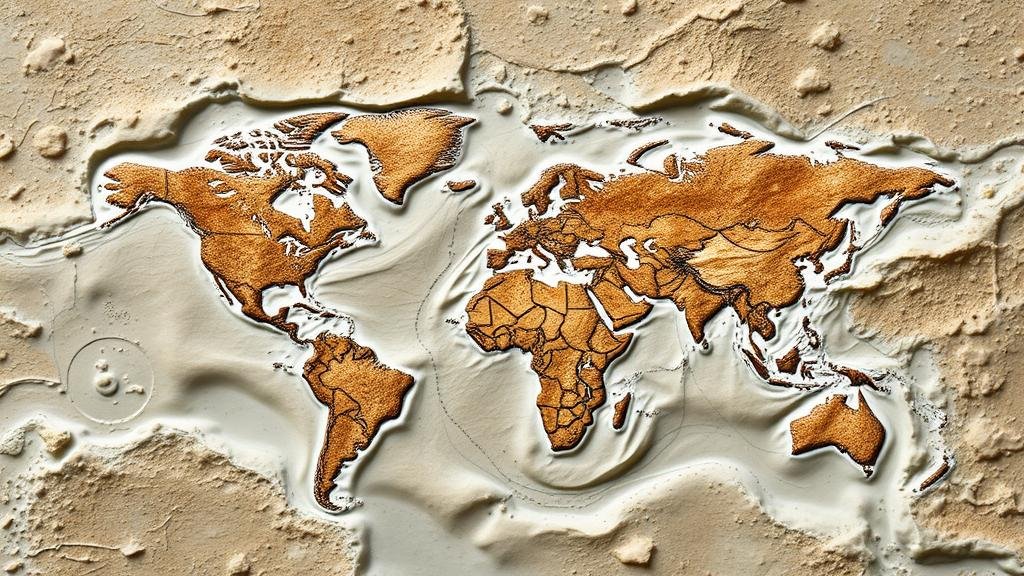Using AI to Map Prehistoric Fossil Deposits from Historical Glacial Records
Using AI to Map Prehistoric Fossil Deposits from Historical Glacial Records
The integration of artificial intelligence (AI) within the fields of paleontology and geology presents groundbreaking opportunities for enhancing our understanding of prehistoric fossil deposits. This research article explores how AI technologies, when applied to historical glacial records, facilitate the mapping and analysis of fossil deposits from various paleoenvironments. The insights gained from this fusion of technology and geology have the potential to reshape our approach to fossil discovery and preservation strategies.
The Importance of Mapping Fossil Deposits
Mapping fossil deposits is critical for multiple reasons, including the understanding of ancient ecosystems, the evolutionary history of species, and the geological events that shaped the Earth. Fossils provide vital clues about past climates and environmental conditions. For example, the discovery of marine fossils in what is now the Sahara Desert indicates that this region was once submerged beneath an ocean approximately 100 million years ago, highlighting significant geological transformations over time.
Historical Context of Glacial Records
Glacial records, consisting of sediments deposited from glaciers over millennia, serve as valuable archives of Earth’s climatic history. The last Ice Age, which peaked approximately 20,000 years ago, left extensive glacial deposits that can be studied to infer information about prehistoric life. For example, paleontologists studying the La Brea Tar Pits in California have uncovered thousands of fossils preserved in asphalt, enabling the reconstruction of fauna that existed during the last Ice Age. These discoveries reveal that large mammals such as mammoths and saber-toothed cats thrived in environments that were vastly different from today.
Artificial Intelligence in Geological Research
AI encompasses a variety of computational methods, including machine learning and deep learning, which analyze complex datasets with immense efficiency. In geological research, AI can be employed to identify patterns within vast datasets derived from glacial records, leading to more accurate predictions of fossil locations. For example, algorithms can analyze the spatial distribution of known fossil deposits in relation to historical glacial movements to infer possible sites of undiscovered fossils.
Case Studies and Applications
Case studies illustrate the practical applications of AI in mapping prehistoric fossil deposits. One notable example is the use of AI-driven image recognition software to analyze aerial photographs of glacial regions in North America. Researchers have successfully trained models to identify areas of interest where fossil beds are likely to be located based on the characteristics of regions with known deposits. In one study, researchers analyzed satellite imagery of Alaskas glacier-fed valleys, resulting in the identification of previously unknown fossil sites, which eventually led to the excavation of several new species.
Another case study involves the integration of AI with Geographic Information Systems (GIS) to create predictive models for fossil distribution. Using historical glacial movement data, these models combine climate change patterns and paleobotanical data to hypothesize where specific fossils may be found. This technique was notably used in the reconstruction of North Americas glacial history, leading to a more refined understanding of how changing ecosystems influenced fossilization processes.
Challenges and Future Directions
Despite the promising applications of AI in mapping fossil deposits, several challenges remain. quality and availability of historical data can significantly affect the training of AI models. Areas with sparse fossil records pose difficulties in creating accurate predictive models. Also, the interdisciplinary nature of this research necessitates collaboration between geologists, paleontologists, and data scientists to ensure that models are both scientifically grounded and computationally feasible.
Future research directions may include the refinement of AI algorithms to enhance accuracy in identifying fossil locations under varying geological conditions. As computational power continues to grow and more geospatial data becomes available, the capability of AI to analyze the complexities of historical glacial records will undoubtedly advance, potentially uncovering valuable insights into Earth’s paleontological history.
Conclusion
The intersection of AI and paleontological research offers a transformative approach to understanding prehistoric life through the analysis of historical glacial records. By utilizing advanced computational methods, researchers can improve the accuracy and efficiency of mapping prehistoric fossil deposits. As the field continues to evolve, the collaborative efforts between AI and geology promise to unlock new avenues for discovery, ultimately enhancing our comprehension of the intricate relationship between climate, environment, and life throughout Earths history.
Actionable Takeaways
- Researchers should leverage AI technologies to augment traditional paleontological research methods.
- Interdisciplinary collaboration is essential for overcoming challenges associated with data quality and interpretation.
- Continued investment in computational resources will facilitate advancements in geological modeling and foster new discoveries in paleontology.



